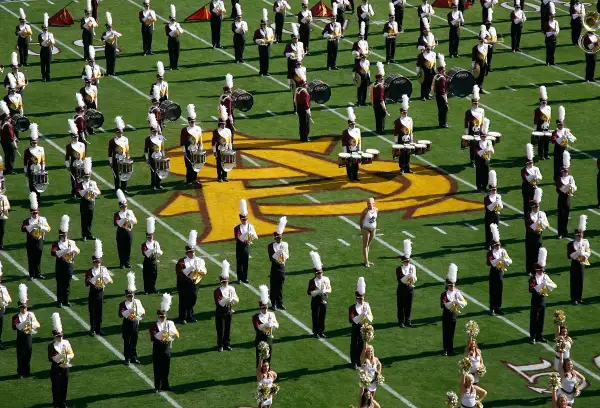The Best-Paid Public College President in the U.S. Makes $1.55 Million a Year

Eight public college presidents took home more than $1 million last year, according to a new report on executive compensation at public colleges—but the highest earner took home $1.55 million in base pay and bonuses, with a package that vaulted him into the top spot.
Arizona State University President Michael M. Crow earned a salary of $838,458 for the 2015-16 academic year, according to The Chronicle of Higher Education's semi-annual executive compensation report, plus a $150,000 bonus and a $550,000 payment from the university foundation as a 10-year retention bonus. Those last two payments helped to elevate Crow—who's led the Arizona State since 2002—above the rest of the top 30, where he has appeared for the past academic two years.
The bonuses also helped him edge out University of Texas System Chancellor William H. McRaven, who took home $1.5 million in a package that includes the much higher $1.2 million in base pay. In fact, the top of the list is peppered with presidents from Texas colleges: The state has eight presidents in the top 40.
Overall, the average total compensation for public college presidents increased 5.3% to $501,398 during the 2015-16 academic year, the Chronicle report finds. That compensation includes base salary, bonuses, deferred compensation, and other benefits such as university-provided housing, meals, cars, and club dues.
Most of the highest-paid presidents oversee expansive public universities with multiple campuses, large enrollments, significant research output, and related services such as university hospitals. And in most cases their pay pales in comparison to the salaries earned by sports coaches at the same schools. At Arizona State, for example, football coach Michael Graham earned $3.3 million, while basketball coach Robert Hurley earned $1.5 million. The Chronicle reports that sports coaches were the highest paid individual at 35% of campuses.
All 10 of the highest-paid presidents are male, and nine of them are white. Among the top 25 earners, four are women—a somewhat higher ratio than among the private-college presidents that the Chronicle tallied in December, when Money noted that just three of the top 25 earners were female.
Such imbalance at the top of the pay spectrum is in line with diversity among college presidents overall—but out of whack with the population on college campuses. Just 30% of college presidents are women, up from 26% in 2011, according to a report released by the American Council on Education earlier this month, while women have outnumbered men on campus for years.
The picture isn't much better for racial diversity. While the number of minority students has been climbing—minorities represented nearly 20% of students at four-year public colleges in 2015, according to federal data, with the number expected to grow rapidly in the coming years—only 17% of college leaders are minorities, up from 13% four years prior.
